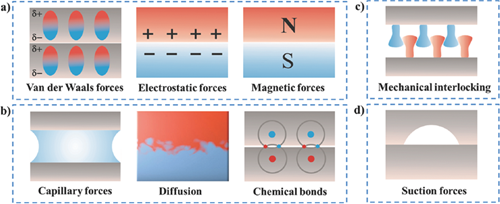Nature often exhibits various interesting and unique adhesive surfaces. The attempt to understand the natural adhesion phenomena can continuously guide the design of artificial adhesive surfaces by proposing simplified models of surface adhesion. Among those models, a peeling model can often effectively reflect the adhesive property between two surfaces during their attachment and detachment processes. In the context, this review summarizes the recent advances about the peeling model in understanding unique adhesive properties on natural and artificial surfaces. It mainly includes four parts: a brief introduction to natural surface adhesion, the theoretical basis and progress of the peeling model, application of the peeling model, and finally, conclusions. It is believed that this review is helpful to various fields, such as surface engineering, biomedicine, microelectronics, and so on. Advanced Science Article first published online: 25 JAN 2016 DOI: 10.1002/advs.201500327 
Description of different types and characteristics of main adhesive interactions: a) surface and field forces, b) material bridges, c) interlocking by shape effects, d) suction forces. Adapted with permission. |

